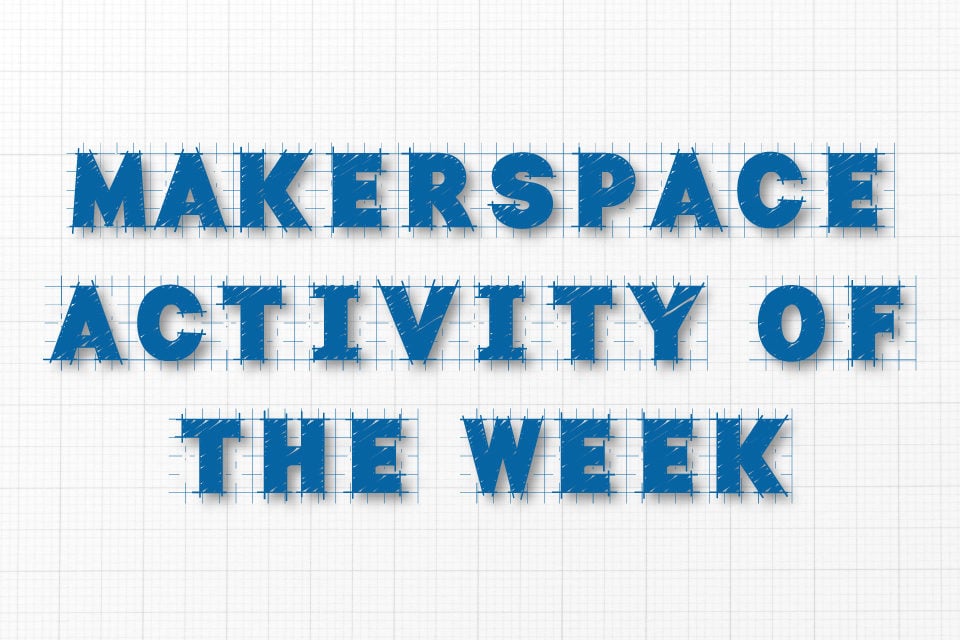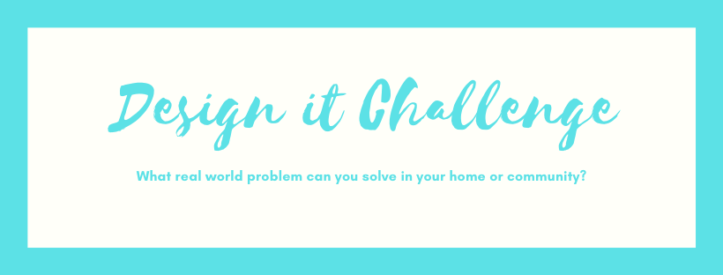
Makerspace Challenges You To Use Your Design Skills
This week’s makerspace activity comes from Shackelford librarian Alicia Vandenbroek. Her “Design it Challenge” encourages you to identify a problem where you live and develop a solution for it. You can use a computer or whatever materials you have at home, but you’ll definitely have to use your creativity.
Scroll down to get started. For more makerspace activities, check out last week’s building butterflies project and check back next week for a new makerspace idea. And don’t forget that all Arlington ISD libraries are open online. Find your school’s library resources and email your librarian with any questions.
Design It Challenge

 |
Hi makers! What real-world problem can you solve in your home or community? Look around your house or neighborhood or think about issues in your community. Brainstorm a list of all the problems or challenges that you see. Then pick one item from that list to problem solve. Some ideas to get you started might be:
|
 |
Really think about what people who experience this problem feel. By understanding what others feel, it helps us know the most important parts of the problem. |
 |
Look online to find out what other people have done to solve this problem. This can help you learn from their mistakes or even realize that someone has already solved the problem! You can expand on their project and make it even better or avoid extra work by not repeating what has already been done. |
 |
You picked this for a reason! I hope that your passion will help you brainstorm a list of all the ways you could solve the problem. Take a good look at your list and then pick one idea that you like best and write or sketch out your plan. |
 |
Make a prototype of your idea. A prototype is just a model or sample of what you want to design. This prototype can be made out of materials around the house, or it can be a digital model. Look in the You Try section below for ideas. |
 |
Try out your idea. Sometimes ideas work right the first time, but normally it takes several tries to make things work. Think about what went wrong. Then go back to that step of the design process and start from there. Sometimes you’ll only need to make a little change, but sometimes you might have to start all over. That process is called the iteration process: trying and trying again until you get it right. |
 |
It can be hard to admit when we don’t get something quite right, but the best makers share both the good and the bad of their projects. It’s important to learn from others as well as ourselves. That process of metacognition (thinking about how we think) helps us really understand both the design process and our project. It can also give us great ideas! For example, I used the ideas on the design process from Stanford’s City X Project and modified it to fit what works best for our students. |
|
Use Tinkercad to design a digital prototype: https://www.tinkercad.com/ or use the Tinkercad app. You can login with your Google account. The great thing is that this website has built-in tutorials that teach you how to use it, and they have a great YouTube channel! The basic idea is that you combine shapes to make designs. They have even added a fun collection of items in a making-at-home collection! |
 |
|
Tired of working on the computer? You can build your prototype out of things in the recycle bin! There are always a ton of things that you can repurpose to make a model of your plan. You can use glue or tape to connect the different parts. Don’t have that at home? Check out this great article from Inventables with different ways you can connect cardboard without tape! |
 |
|
Tinkercad Website: When you model in Tinkercad, if you click the brick icon it will convert your drawing to Lego style. If you select the block it will be Minecraft styled. In your shape menu, you can even practice your science skills by creating circuits that light up! Tinkercad App: if you build your model on the Tinkercad app, you can use augmented reality to bring your creation to life. It will look like your creation is actually inside your room! Read more about it in this blog post from Tinkercad. |
 |
